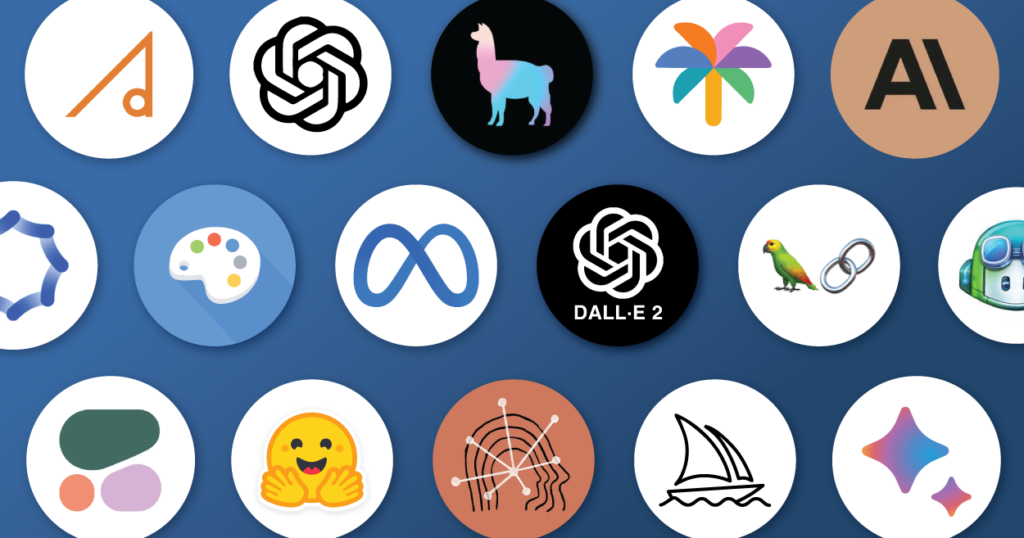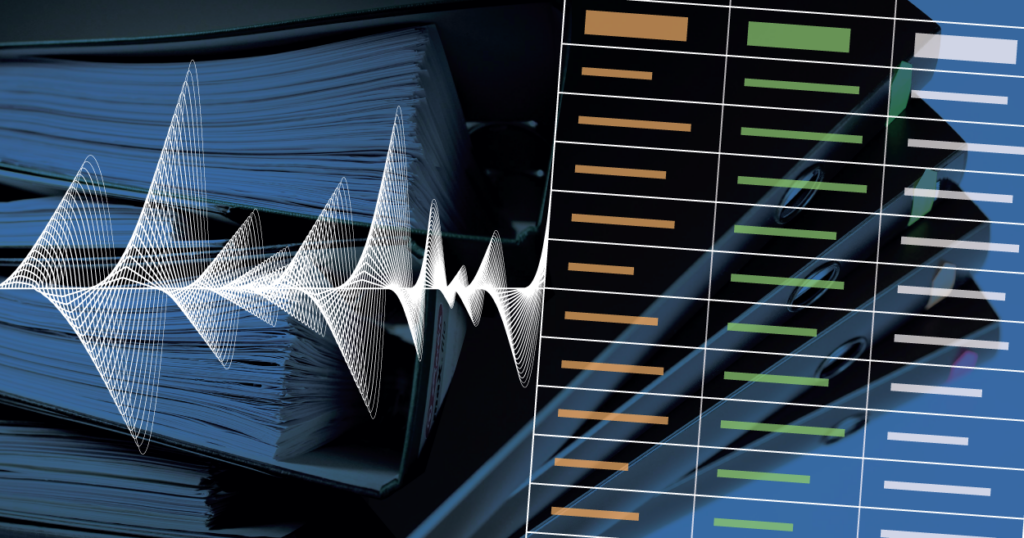A Deep Dive Into Specific Generative AI Models
Author: Tony Ojeda
In our previous blog post we discussed how Generative AI models have the ability to create new content from scratch as well as extract valuable insights from vast data sets. We explored topics such as the steps required to utilize generative AI models, the importance of large language models, and the concept of transformers which is the technology behind many of the popular large language models in use today.
In this blog post, we will take a deep dive into some of the most popular and influential Generative AI models. From generating human-like text conversations to creating unique, never-before-seen images, these models are pushing the boundaries of what’s possible with AI, and understanding their unique features and applications can provide valuable insights into their capabilities and potential. We will also cover some useful open source frameworks and platforms that can greatly enhance your ability to develop Generative AI based applications.
Popular Models and Tools
Among the most popular generative AI models are GPT, PaLM, Llama, and Claude, each with their own unique strengths and weaknesses. The effectiveness of these models vary significantly depending on the tasks they are assigned. Furthermore, the relationship between the model and the tool that utilizes it plays a crucial role in determining the overall performance. In this section, we will delve into these popular generative AI models and the related tools that harness their capabilities, providing a basic understanding of their functionalities and use cases.
GPT-4, developed by OpenAI, is a large language model that has made significant strides in text generation and understanding. It is trained on vast amounts of unstructured data and is capable of performing a variety of tasks such as reading, text generation, code completion, translation, and summarization. GPT-4 forms the foundation for AI tools like ChatGPT, which have seen significant growth in popularity and business use cases. It excels in responding to written or image-based prompts, answering questions, telling stories, and solving complex problems.
One of Google’s most recent contributions to the field of generative AI is the PaLM model. PaLM 2 was unveiled at its 2023 I/O event and introduced several new capabilities that are optimized for applications with limited processing power. This optimization makes it accessible to a broader spectrum of devices and products. PaLM 2 showcases improved reasoning capabilities compared to GPT-4, especially in tasks where the goal is to choose the right option for a given sentence that requires commonsense reasoning, a test known as WinoGrande, and on reading comprehension and arithmetic, a test known as DROP. It has been trained in over 100 languages, which bolsters its contextual understanding and translation capabilities. Alongside PaLM 2, Google’s BARD (the application utilizing the PaLM 2 model) also plays a significant role in enhancing language understanding. Both systems work in tandem, with BARD providing a user-friendly interface as well as a mechanism for collecting usage data and user feedback for PaLM 2’s advanced reasoning and translation capabilities.
Meta’s Llama 2 is an open-source model that allows developers to build and improve on the model. In order to do this and increase access to foundational AI technologies, Meta partnered with Microsoft’s cloud computing platform Azure and made the model available in three pre-trained model sizes. While it did not score as high as other models on datasets measuring general knowledge, math, or coding abilities, it outperformed other open-source models in chatbot form.
Claude 2, developed by Anthropic, is another front-runner in terms of cutting edge large language models. It outperforms GPT4 in tasks dealing with logic, reasoning, specialized knowledge of fields such as math and science, and in software development but comes up short in terms of general knowledge questions and flexibility of input. What sets Claude 2 apart is its large context window of 100,000 tokens, larger than any other model on this list, and Anthropic’s prioritization of AI safety through what they can Constitutional AI. This means that the AI model is trained and designed to follow a set of ethical guiding principles modeled after human rights documents. Claude 2 is available for use through Amazon’s Bedrock platform and its commitment to AI safety sets a precedent for future models.
Open Source Frameworks and Platforms
Alongside the rise in popularity of various large language models comes the rise of open source frameworks and platforms for utilizing such models. These tools have shifted the landscape of developing Generative AI based applications by providing pre-built yet customizable building blocks to utilize, improving access to various models, and lowering the cost of entry. In this section, we will delve into the emergence and growth of LangChain, LlamaIndex, and Huggingface.
LangChain is a versatile framework designed for the development of applications powered by Large Language Models. It provides a unique approach to chaining together different components, including prompt templates, LLMs, agents, and memory modules, to create advanced use cases. This allows for the creation of context-aware applications that can reason and make decisions based on provided context. LangChain is particularly useful due to its modular components and off-the-shelf chains, which simplify the process of accomplishing specific tasks and customizing applications. However, agents built with LangChain have a tendency to get stuck in reasoning loops, preventing them from accomplishing the given task, and the complexity of chaining together multiple components may present a learning curve for new users.
LlamaIndex, previously known as GPT Index, is a comprehensive data framework designed to augment Large Language Models with private or domain-specific data. It offers a suite of tools that allow users to ingest, structure, and access their data, making it easier and more efficient for LLMs to consume. LlamaIndex is particularly useful as it bridges the gap between the vast public data LLMs are trained on and the private or domain-specific data that applications built on LLMs often require. It provides data connectors, data indexes, query engines, chat engines, data agents, and application integrations, making it a versatile tool for both beginners and advanced users.
Huggingface is a widely recognized open-source platform that hosts a plethora of Generative AI models including both large language models (LLMs) and image generator models. It is renowned for its extensive library of pre-trained models and its user-friendly interface that allows developers to easily integrate these models into their applications. Huggingface also features a leaderboard for LLMs, providing a competitive platform for developers to compare the performance of their models. This leaderboard is a testament to the platform’s commitment to fostering innovation and advancement in the field.
AI Image Generator Models
Amongst the incredible progress being made by large language models, image generator models have carved out a unique niche. Unlike the popular models mentioned in the previous section, which are primarily text-based, AI image generator models like Midjourney, DALL-E2, and Stable Diffusion focus on creating visually compelling and realistic images. These models have a wide range of applications, from graphic design to virtual reality. In this section, we will delve into the intricacies of these popular AI image generator models, exploring their capabilities, differences, and optimal use cases.
Midjourney is a generative AI model that focuses on creating high-quality, realistic images. It uses a combination of convolutional neural networks (CNNs) and generative adversarial networks (GANs) to generate images that are almost indistinguishable from real-life photos. The strength of Midjourney lies in its ability to generate high-resolution images with intricate details. However, some of its weaknesses include its inability to incorporate all elements of a complex prompt into a resulting image, its inability to generate legible words or numbers, and that it often will distort human faces and hands.
DALL-E2 is a variant of the original DALL-E image generation model developed by OpenAI. It uses a transformer-based architecture, which allows it to understand complex relationships between words and generate corresponding images. Its strength lies in its ability to generate diverse and creative images from a simple text prompt. However, it also has its limitations. For instance, it sometimes struggles with generating images that accurately represent more abstract or complex concepts. This may be addressed soon though as DALL-E3 was recently announced to be coming in October of 2023. It promises to improve on how users interact with it by incorporating ChatGPT’s understanding and conversational interface to reduce the complexity of prompt engineering for users while simultaneously feeding the model more instructive prompts.
Stable Diffusion is another image generation model that has been making waves in the AI community. This model begins with an image composed of random noise which is then processed with a diffusion model to iteratively refine the noise and progressively produce an image based on user prompts. While Stable Diffusion has the ability to create images based on text prompts like other image generator models, one of its unique strengths is its ability to effectively restore low-resolution or degraded images by reducing noise, sharpening details, and improving overall clarity. One drawback to using Stable Diffusion is that it can be slower than other models due to the iterative nature of the diffusion process.
While all three models are powerful tools for generative AI, each is best suited for different use cases. Midjourney excels at generating high-quality, realistic images but is limited in how it produces images based on complex prompts, generating legible words or numbers and human faces or hands. DALL-E2 is excellent at generating creative images but can struggle with more abstract concepts. Stable Diffusion is versatile, stable, and can effectively restore low-resolution or degraded images but can be slower than other models.
Given the rapid rise in Generative AI models, frameworks, platforms, and tools it’s more important than ever to understand their unique features, strengths, and limitations in order to harness the capabilities and potential of this revolutionary technology. There’s a lot of information out there so if you want to enhance your business with the power of AI by utilizing a team of specialists, contact us today. For more Generative AI related content, make sure to follow our blog or sign up for our mailing list as we will be continuing to post more blog posts like this in the coming weeks.



